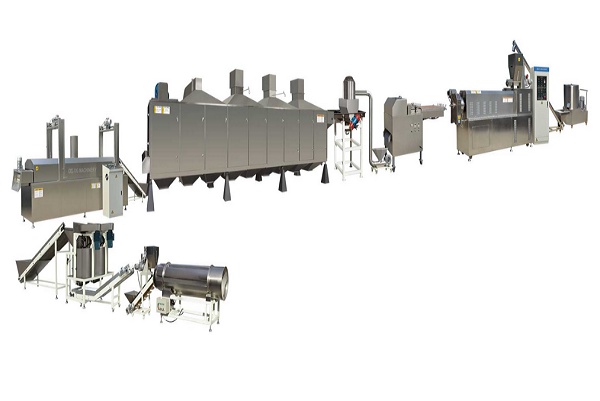In the ever-expanding pet care industry, one crucial component often goes unnoticed: the pet food plant. These facilities play a pivotal role in creating the nutritious and delicious meals our beloved pets eagerly devour. This article delves into the inner workings of pet food plants, highlighting their significance and the processes involved.
The Role of a Pet Food Plant
Pet food plants are dedicated facilities designed to produce a wide range of pet food products. From kibble and canned food to treats and specialty diets, these plants are responsible for ensuring our furry companions receive the nutrition they need. Let's explore their key functions.
Ingredients Selection and Quality Control
The first step in the production process is selecting high-quality ingredients. Pet food plant meticulously source raw materials, including meat, vegetables, grains, and supplements. Quality control measures are essential to maintain the integrity of the final product, as ensuring the safety and nutritional value of pet food is paramount.
Recipe Formulation
Creating a balanced recipe that meets the specific dietary needs of different pets is no small feat. Pet food plants employ nutritionists and veterinarians to develop formulas that provide essential nutrients like protein, fats, vitamins, and minerals, while also considering factors like flavor and texture.
Production Process
Pet food manufacturing involves various methods, such as extrusion, baking, and canning. The choice of method depends on the type of product being produced. Extrusion, for instance, is often used for kibble, while canning is preferred for wet food. The production process is a well-coordinated effort that includes mixing, cooking, shaping, and packaging.
Quality Assurance and Testing
Pet food plants implement rigorous quality control measures throughout the production process. Samples are regularly tested to ensure nutritional accuracy, flavor consistency, and product safety. Any discrepancies are promptly addressed to maintain the highest quality standards.
Packaging and Distribution
Once the pet food is manufactured and quality-tested, it's time for packaging. Pet food plants use specialized equipment to fill bags, cans, or other containers with the finished product. Proper packaging is essential to preserve freshness and prevent contamination. The packaged pet food is then distributed to retailers, making its way to pet owners worldwide.
The Evolution of Pet Food Plants
Over the years, the pet food industry has seen significant advancements in pet food plant technology. These developments have allowed for improved product quality and efficiency. Some notable innovations include:
- Automation: Many pet food plants now incorporate automation to streamline production processes, reduce human error, and enhance consistency.
- Customization: With the growing demand for specialized diets, pet food plants are equipped to create customized recipes to cater to individual pet needs, such as grain-free or hypoallergenic options.
- Sustainability: Sustainability is a growing concern in pet food production. Pet food plants are increasingly adopting eco-friendly practices, like sourcing ingredients from local suppliers and using recyclable packaging.
Challenges in Pet Food Plant Operations
Operating a pet food plant comes with its own set of challenges. These include:
- Regulatory Compliance: Pet food manufacturing is heavily regulated to ensure the safety and quality of products. Compliance with standards set by organizations like the Association of American Feed Control Officials (AAFCO) and the U.S. Food and Drug Administration (FDA) is crucial.
- Ingredient Sourcing: Sourcing high-quality ingredients can be a challenge due to fluctuating prices and availability. Pet food plants must maintain strong relationships with suppliers.
- Consumer Demand: Meeting consumer demands for diverse and healthier pet food options while maintaining affordability can be a delicate balance.
The Future of Pet Food Plants
The pet food industry continues to grow as pet owners become more conscious of their pets' nutritional needs. This has led to an evolution in pet food plant practices and the development of innovative products.
- Premium Ingredients: Pet food plants are exploring premium and organic ingredients to cater to health-conscious pet owners who seek the best for their furry friends.
- Sustainable Practices: As environmental concerns mount, pet food plants are implementing sustainable practices, from sourcing to packaging, to reduce their carbon footprint.
- E-commerce and Direct-to-Consumer Sales: The rise of e-commerce has opened new avenues for pet food sales. Some pet food plants are shifting toward direct-to-consumer models to reach pet owners more efficiently.
Conclusion
Pet food plants play a pivotal role in the pet care industry, providing the nutritious meals our pets rely on for their well-being. With a focus on quality, innovation, and sustainability, these facilities continue to evolve to meet the ever-changing demands of pet owners. As our understanding of pet nutrition deepens, the role of pet food plants becomes increasingly important in ensuring our beloved pets lead healthy and happy lives.


No comments yet